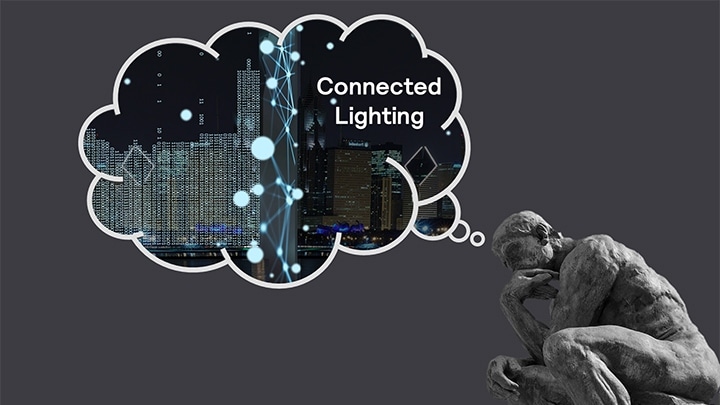
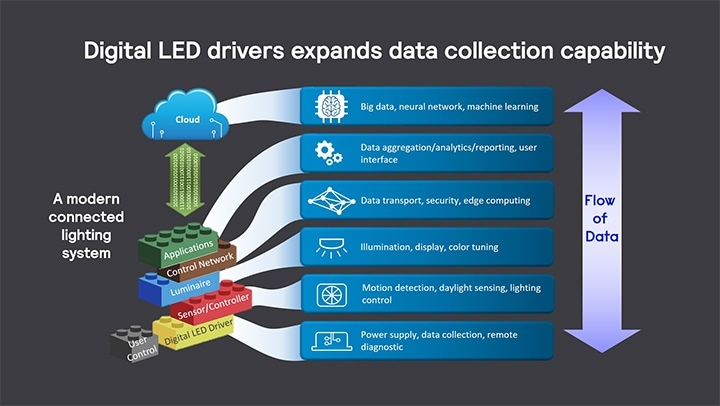
Imagination drives our world forward
If you look around, our world has improved dramatically because of the rapid advancement in technologies. Smart mobile devices, electric vehicles, and e-commerce are some of the most well-known and talked about modern inventions that have fundamentally changed how we live and interact with each other. While Steve Jobs, Elon Musk, and Jeff Bezos are household names who have transformed their respective industries, their successes are built on many technological innovations that are the fruits of the imagination from countless people.
When it comes to the connected lighting systems, what does imagination have to do with the future of the lighting industry? I’ve been asked numerous times by colleagues, customers, and business partners when would connected lighting become mainstream. Frankly I think all the building blocks are already available now and the only missing element is our imagination. While this may sound abstract, and some may even challenge this notion because it trivializes the market dynamic and economical challenges, I would argue that sometimes it only takes a leap of faith by the right people to reimagine how the connected lighting systems can transform our lives.
From energy savings to values creation
For many years the connected lighting systems has been utilized with the end goal of achieving energy savings. There have been countless articles and studies that explains the energy savings potential of the connected lighting systems.
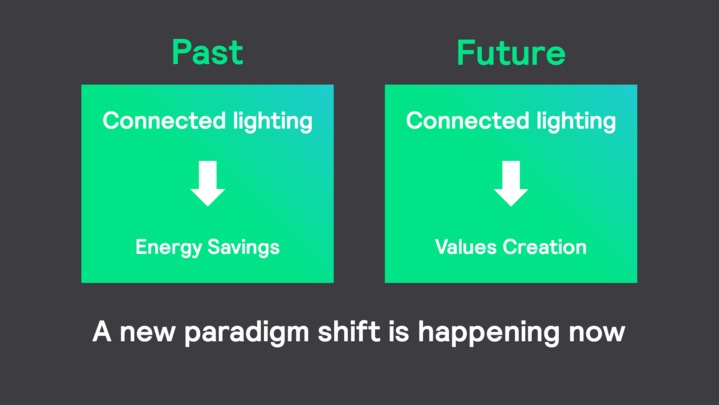
Moreover, the US Department of Energy (DoE) released a report titled Adoption of Light-Emitting Diodes in Common Lighting Applications in August of this year. If you analyze the numbers cited by this report, you will be able to derive the additional energy savings potential that the connected lighting systems can produce in the US. Below is the result I calculated for three of the most important categories of commercial and industrial lighting:
Linear fixtures: Additional 3% in energy savings that is equivalent to $13.4B USD
Low/high bay fixtures: Additional 22% in energy savings that is equivalent to $10.0B USD
Street/roadway fixtures: Additional 20% in energy savings that is equivalent to $3.3B USD
It’s fair to say that both DLC and DoE reports have put to rest any lingering doubt about the energy saving potential of the connected lighting systems. What is unclear, though, is the value creation potential. How do we quantify the benefits and the hidden potential that connected lighting system can bring? I think this is where our imagination can lead us to the answer. (Figure 2)
A future world with the connected lighting systems
When it comes to value creation, you may be surprised to hear that I’d be the first to admit I don’t have the answer. The reason is that it really depends on how do the end customers reimagine what the connected lighting systems can do. Specifically, I’m talking about the extra benefits that the connected lighting systems can generate when real-time information becomes available. To quantify these elusive value creation potential, we have to pay attention to clues that are already around us.
Back in February, I wrote a blog tilted Lighting Industry A Decade From Now. In that article I explain how the connected lighting systems can play a key role in the world of Internet of Things (IoT). Technological advancement in machine learning, artificial intelligence, mobile devices, coupled with the all-digital lighting infrastructure, will transform the way we interact with the physical world. The concept of mirror world—in which digital information and our physical world are seamlessly intertwined—will enable us to have an even more immersive and intimate experience with all the digital information we access each day through our mobile devices and computers. (Figure 3)
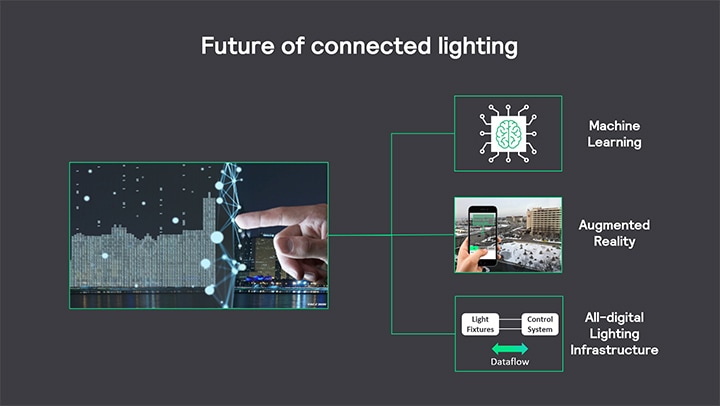
Since this blog was published, I have had numerous conversations with my colleagues, customers, and Signify’s IoT partners. While there is healthy debate on how mature are these three key elements of the mirror world—machine learning, augmented reality, and all-digital lighting infrastructure—everyone agrees that this is where the industry is heading. There is also consensus that building the all-digital lighting infrastructure NOW is the most crucial first step.
To identify the hidden clues that would reveal the value creation potential of the connected lighting systems, we would first need to have a longer-term vision of what the connected lighting systems can do. In other words, we need to embrace the connected lighting systems with a newer, and dare I say, more disruptive mindset. This is more critical than ever especially given the uncertainties with the COVID-19 pandemic, which has fundamentally changed our way of working (e.g. work from home, distance learning, etc.). This newer and disruptive mindset requires an imaginative interpretation of how lighting can transform our lives and our current way of working. If you consider the parallel examples of what other thought leaders such as Steve Jobs, Elon Musk, and Jeff Bezos have done in reimaging what their respective industry would be with smart phones, autonomous electric vehicles, and e-commerce, it’s time for all of us to think bigger and be bolder with our imagination about the connected lighting systems.
Value creation use cases
To help visualize the future state of the connected lighting systems, I listed four most talked-about use cases that can generate additional values beyond energy savings. While these four use cases have yet to become mainstream, and are probably not part of the lighting design specifications, their future benefits are compelling and undeniable. (Figure 4)
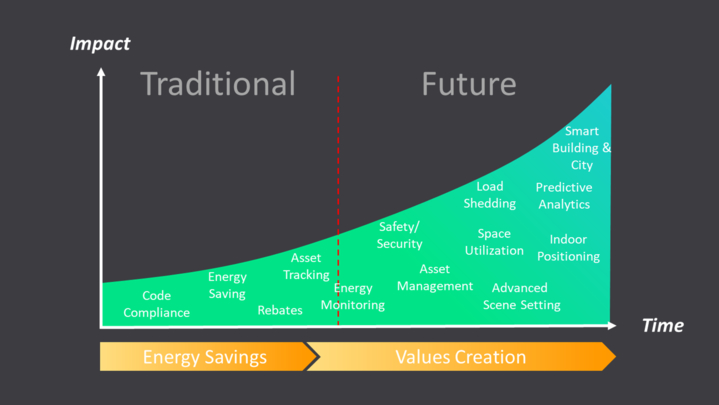
The future is now
As exciting as the connected lighting systems are to some of us, the reality is that their commercial adoption is still at the infancy. The consensus is that the market adoption is well short of 10% in the US. While technologies have improved and prices have tumbled, for the most part energy savings is still the primary decision criteria. I think it’s time for all of us to dream big and use our imagination to visualize what the future might look like. It’s equally important for the decision makers who are tasked with charting the future of their organizations to think of the connected lighting systems with a different mindset. By shifting the focus away from energy savings and toward the value creation, we can better identify and quantify the future potential of the connected lighting systems. Furthermore, technology for the all-digital lighting infrastructure has matured to the point that we can begin laying the digital foundation today by using luminaires equipped with digital LED drivers. In my closing remark at the 9/1 roundtable, I left the audience with this final thought: in the future of mirror world, what the connected lighting systems can do is only bounded by our imagination.

November 14, 2023
How lighting technology can help reduce risks to migrating birds